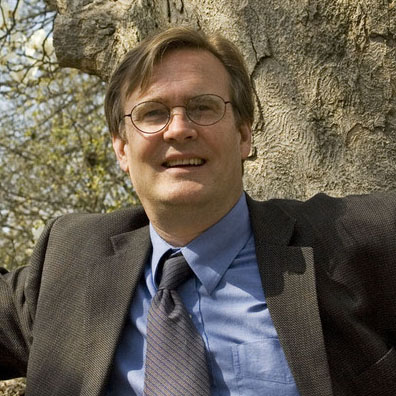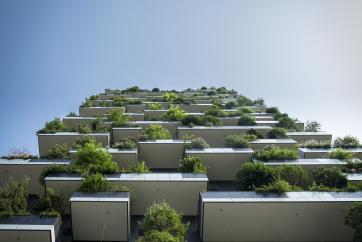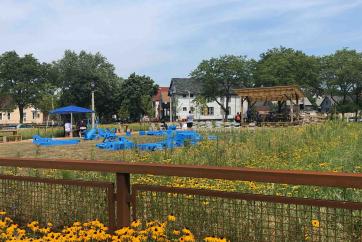The biophilic movement embraces the understanding that humans have an innate connection to the natural world. Scientific studies demonstrate that access to nature is a significant antidote to long-term chronic stress experienced by many urbanites. It also enhances cognitive performance and mood, and focuses humans on the larger world resulting in greater generosity and cooperation. In the context of the challenge of climate change, biophilic interventions contribute to mental, social and emotional health in addition to providing components of resilience.
Bridging the human-nature divide in cities presents tremendous health opportunities at the urban scale. As illustrated by IUCN initiatives such as GrowGreen, cities are at the vanguard of innovative, nature-based solutions that address not only human health but also the challenges of climate change, biodiversity losses and inequitable economic systems. Cities are also the landscapes where the greatest disconnect with nature has occurred, and where the opportunity exists to bring exponential health benefits to disconnected communities. Managing landscapes for nature and people is one of the major themes that will be addressed at IUCN’s 2020 Congress.
Since its launch in 2013, the partner cities of the Biophilic Cities Network are working collectively to plan and design cities that prioritize nature as an essential element for the health and wellbeing of their citizens, within their unique and diverse environments and cultures. What does the healthy, biophilic city look like?
Parks, green spaces, and outdoor activities are all elements that can improve the health of urban citizens. In the United Kingdom, Birmingham and Edinburgh are exploring strategies to co-invest in health and nature through the conservation of green and blue infrastructure connections across the city. This has most recently resulted in their selection to participate in the Future Parks initiative aimed at creating innovative and sustainable solutions to manage and fund parks and open spaces, specifically with a goal of ensuring that parks contribute to the public’s mental and physical health. Another example is Austin, Texas, where the Imagine Austin comprehensive plan has prioritized the creation of a healthy city by providing spaces where people can easily walk, bike, play, and find nearby healthy food options and healthcare. Edmonton, Canada’s WinterCity Strategy aims to reduce social isolation during winter months by developing programs and infrastructure that facilitate residents getting outdoors despite winter conditions. In addition, the city’s Breathe Strategy seeks to ensure that as the city grows, every neighbourhood will be supported by a network of open spaces at the site, neighbourhood, city and regional levels.
Furthermore, biophilic cities are promoting local biodiversity and using the urban landscape to strengthen the human-nature connection. In Curridabat, Costa Rica, the city’s Ciudad Dulce (“Sweet City”) vision to promote the flourishing of pollinators across the city landscape was recognized as a 2019 Wellbeing City Award finalist. The initiative corresponded with an improvement in the mental health experience of its citizens. Lastly, in Milwaukee, Wisconsin, the HOME GR/OWN program is re-purposing the city’s vacant lots for the use of urban agriculture, parks, orchards and green spaces to improve residents’ quality of life and provide access to local, healthy food.
In short, a healthy, biophilic city is a city that provides access to nature as a building block for the wellbeing of the individual and larger communities, and fosters the qualities that will be essential to resilience, sustainability, and healthy social ecologies.
About the authors

Dr. Tim Beatley, the Founder and Executive Director for Biophilic Cities, is the Teresa Heinz Professor of Sustainable Communities, in the Department of Urban and Environmental Planning, School of Architecture at the University of Virginia.

JD Brown is the Program Director for Biophilic Cities and in this role facilitates the expanding and deepening connections among the partner cities of the Biophilic Cities Network and the many individuals and organizations advancing the theory and practice of planning and designing biophilic cities.







